Did you know that there are NO FODMAP foods? We talk all the time about low or high FODMAP foods, but there are actually foods that have been lab tested and have shown no detectable FODMAPs! There are also foods, such as pure proteins and fats, that are no FODMAP by their very definition. If you have IBS and are following the low FODMAP diet, information on no FODMAP foods will be helpful for you.
Addressing Re-Tested Foods
Information is included in this article about foods that Monash University has re-tested that have been shown to contain no FODMAPs during one batch of testing, and to contain FODMAPs during additional testing.
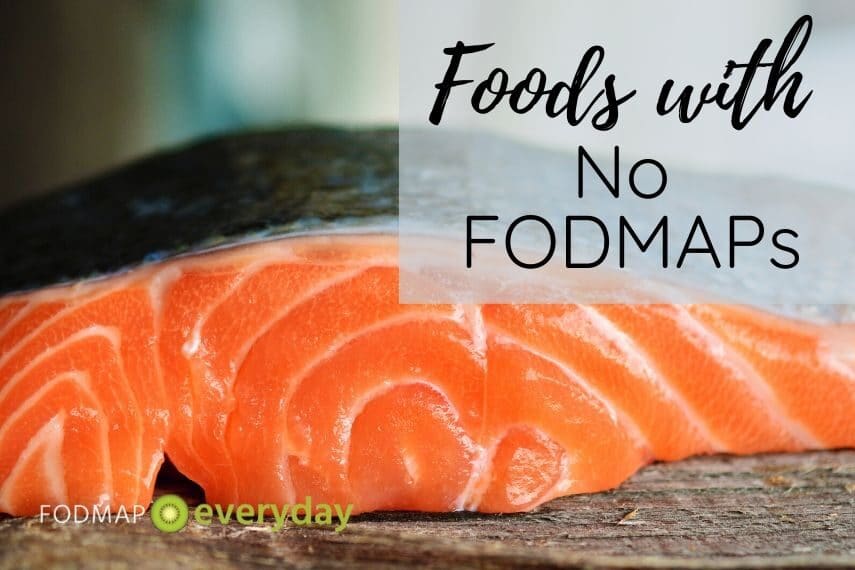
Lab Testing Of Foods
To fully understand why different lab results can occur – and why it is not something to panic about – please read these 5 inter-linked articles:
- Monash University Lab Testing Explained
- FODMAP Friendly Lab Testing Explained
- How To Use The Monash University Smartphone App
- How To Use The FODMAP Friendly Smartphone App
- When Monash University & FODMAP Friendly Lab Test Results Differ
Do I Need No FODMAP?
Note that the low FODMAP diet is not a no FODMAP diet, it is a reduced FODMAP diet, but we are aware that every now and then people are in a very sensitive and reactive time in their healing and no FODMAP foods might be helpful to know about.
Proteins Contain No FODMAPs
First things first, let’s talk about which foods, by their very structure and makeup, contain no FODMAPs. Proteins and fats do not contain any FODMAPs. All FODMAPs are carbohydrates.
Pure proteins, (not steak with Bearnaise sauce), are no FODMAP. Here is a list of proteins you can eat that contain NO FODMAPs:
- Beef – Steak, hamburger, beef ribs, short ribs, filet mignon, etc.
- Lamb – Lamb chops, ground lamb, leg of lamb, cubed lamb for stew, etc.
- Pork – Pork chops, ribs, ground pork, pork loin, some bacon, etc.
- Poultry – Chicken, turkey, duck, goose, ground chicken & turkey, etc.
- Fish – Salmon, cod, tuna, mackerel, bass, some canned tuna and sardines, etc.
- Shellfish – Shrimp, clams, oysters, lobster, crab, mussels, etc.
- Egg whites
Fats Contain No FODMAPs
Oils – all pure oils – are no FODMAP:
- Avocado oil
- Canola oil
- Coconut oil – refined and unrefined
- Olive oil
- Peanut oil
- Rice bran oil
- Sesame oil
- Sunflower oil
- Vegetable oil
- Walnut oil
- Any pure oil
The predominant FODMAP in garlic and onions are fructans, which are not oil soluble, which is why we can make Garlic-Infused Oil (or Onion-Infused Oil) and have the result be free of FODMAPs.
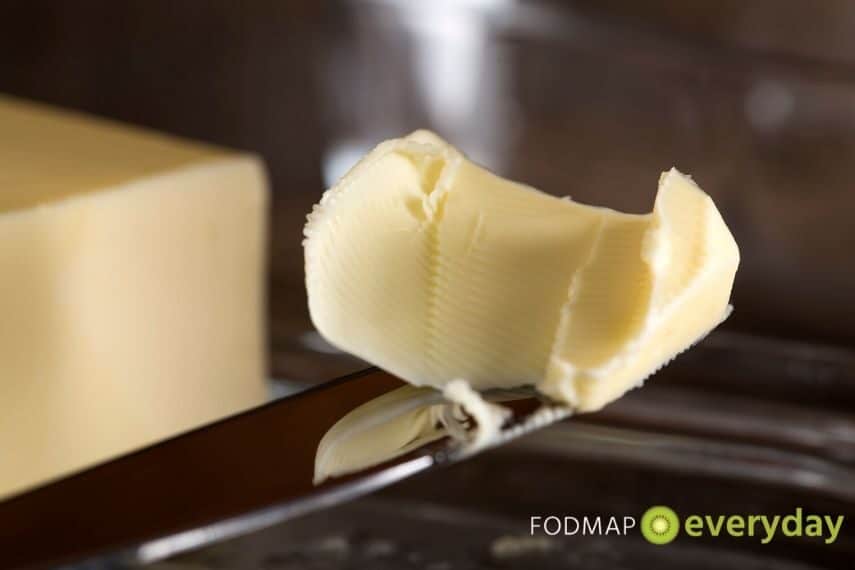
These fats below are also considered no FODMAP according to Monash University lab testing:
- Butter
- Duck fat
- Margarine
Fats contain no carbohydrates, or a small enough amount, to be labeled as not containing FODMAPs, however, they might not be completely free of FODMAPs in certain quantities. Please read our article on How To Read A FDA Nutrition Facts Label. Always remember that FODMAPs are very connected to serving size and portions.
Always remember that FODMAPs are very connected to serving size and portions.
Lab Tested Foods With No FODMAPs
Monash University has lab tested more raw ingredients than anyone and they use a Red/Yellow/Green Light system to help the consumer understand FODMAP levels.
Green Light = Low FODMAP, appropriate for Elimination Phase
Yellow Light = Moderate FODMAP (Monash refers to this as “amber”)
Red Light = High FODMAP
We believe that everyone following this diet should download the Monash University Low FODMAP Diet App™ and use it as a primary reference tool. For prepared products, FODMAP Friendly has tested the most items; download their app, too. FODMAP Friendly recently completely overhauled their app in early 2022 and we have an article for you detailing their app.
NOTE that you HAVE to click through into each item in the Monash University Low FODMAP Diet App™ – even if it shows a Red Light initially – because there might very well be a Green Light Low FODMAP serving size of that food. The diet is dependent on portion control and is not black and white.
For example, Almonds in the Monash University Low FODMAP Diet App™ get a Red Light, but when you click through to view the complete entry, you will see that almonds have a Green Light low FODMAP serving of 10 nuts or 12 g. (The Red Light is, in our opinion, arbitrarily determined by what Monash calls “1 serve”, which at 20 nuts or 24 g is high in GOS (galacto-oligosaccharides). 10 whole almonds are a perfectly acceptable low FODMAP serving of nuts! (The serving sizes in the app, by the way, are partially determined by FODMAP thresholds, and also by Australian Government Healthy Eating Guidelines, which we think creates confusion).
You might find this article helpful: High FODMAP Foods With Low FODMAP Serving Sizes.
What Does The Green Light Mean?
Within the Monash University system, foods that have a Green Light serving size are low FODMAP. But what about no FODMAPs? Hidden within those Green Light items on the app are foods that actually had no FODMAPs detected during lab tests.
So, to reiterate, Green Light can mean that a food has a small enough amount of FODMAPs to be considered low FODMAP, or, it can mean that the food has no FODMAPs. There are also foods that contain a “trace” of FODMAPs. You have to search through the app to find the latter, as they are not distinguished from one another or searchable in that way.
And Then There Is “No FODMAP”. Or Is There?
Here are lists of fruits, vegetables, grains and other foods that have been lab tested and shown to contain no FODMAPs at one point in time. If you are wondering what that language means, it refers to the fact that Monash has occasionally gone back and re-tested fruits and vegetables only to get different results.
In late 2021 and early 2022 Monash University published new findings for grapes, strawberries, red peppers, among other items. In these subsequent tests FODMAPs were detected in these foods, whereas they showed “no FODMAPs” in prior tests. So, you are probably wondering, “which is it? Do these contain FODMAPs, or not?”
Grapes Can Contain FODMAPs – And Be FODMAP Free
The fact is that these foods have shown both results in lab tests. And this is due to the fact that the items tested were not the same in each test. This tells us that it is possible for grapes to be no FODMAP, and also possible for them to contain FODMAPs, but don’t worry! Both lab tests were “right”. And the grapes you eat (to use grapes as an example) will even be different from the ones lab tested by Monash University the first time, and the subsequent time.
BTW red grapes were shown to contain no FODMAPs in FODMAP Friendly lab testing.
As always, we look at lab results as lines in the sand; they provide information for you to begin exploring your relationship with FODMAPs, which will be unique.
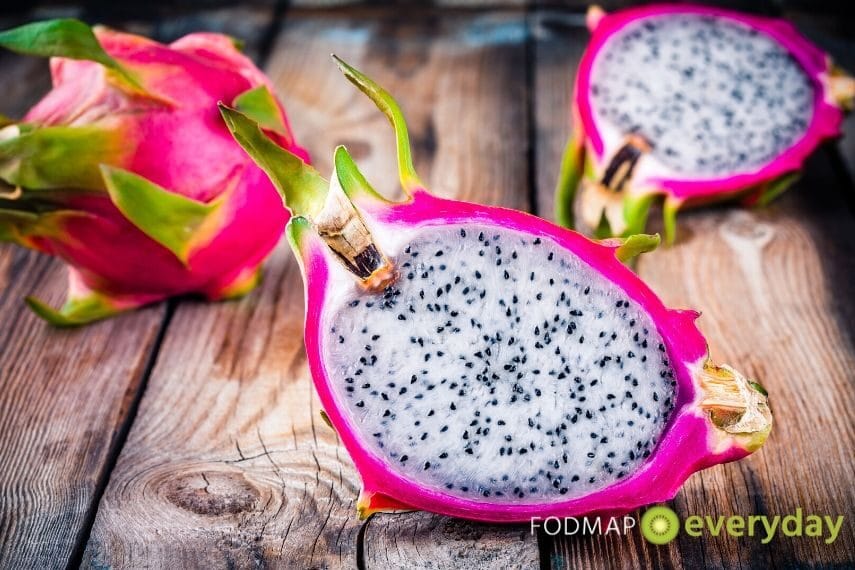
Fruit
- Banana: Monash University initially reported that firm sugar bananas (initially called Lady Finger bananas on the app) contained no FOMAPs. They have now moved that to “trace”; FODMAP Friendly lab testing reports that green unripe sugar bananas contain no FODMAPs
- Breadfruit
- Clementine oranges
- Dragon fruit
- Durian melon
- Grapes: green, red & black*
- Guava, ripe
- Mandarin oranges: Monash initially reported no FODMAPs; subsequent lab tests suggest 1 medium 90 g orange is low FODMAP.
- Navel oranges: Monash initially reported no FODMAPs; subsequent lab tests suggest 1 medium 130 g orange is low FODMAP.
- (FYI: Monash initially stated that freshly squeezed orange juice contains no FODMAPs as well; subsequently they re-tested and stated that a low FODMAP serving size is 70 g or ½ cup).
- Papaya
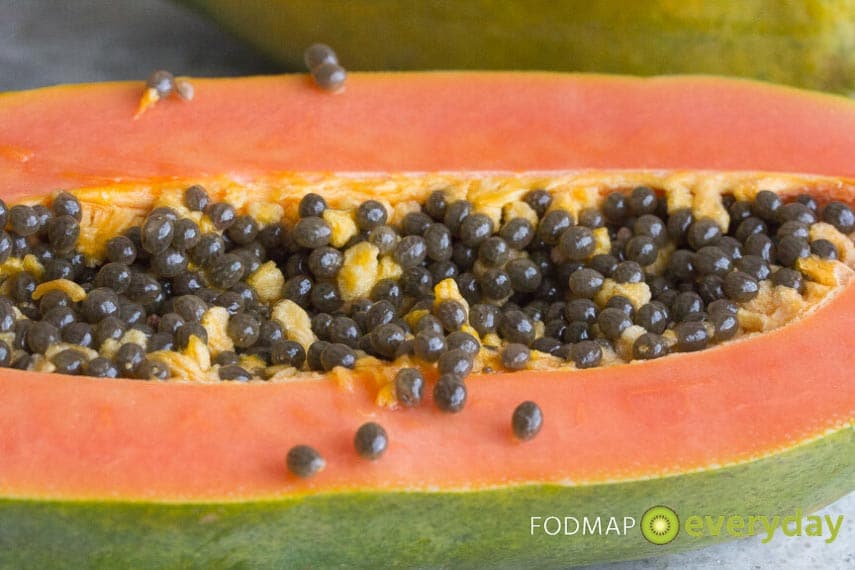
- Prickly pear
- Rhubarb
- Starfruit (carambola)
- Strawberries*
Vegetables
- Arugula (Also called Rocket. For years Monash had reported that arugula contained NO FODMAPs in lab testing. During a smartphone app update, the statement changed to “only trace amounts”. They still recommend to “eat freely and according to appetite”).
- Beetroot, pickled
- Carrot
- Choy sum
- Cucumber
- Endive leaves (also called curly endive or frisée)
- Japanese pumpkin (kabocha squash)
- Lettuce: butter: Monash retested and lab tests suggest 2 cups (75 g) is low FODMAP.
- Lettuce: red leaf
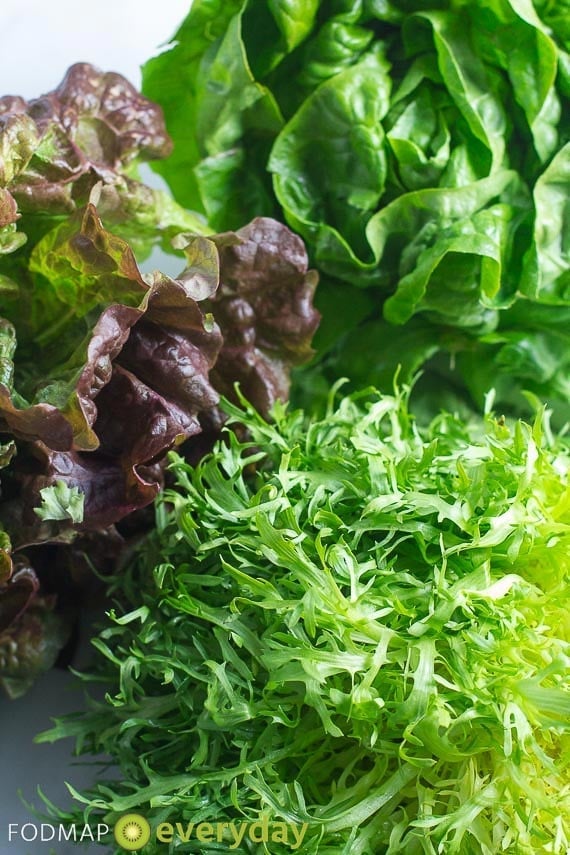
- Pattypan squash
- Parsnip
- Potatoes: red skinned, yellow-skinned, purple-skinned & russet baking potatoes
- Red bell pepper*
- Red radish
- Scallion tops, green parts only; also called spring onion by Monash
- Tomato: common beefsteak*
Miscellaneous
- Chives
- Eggs, whole
- Ginger, fresh
- Licorice Tea
- Malt vinegar
- Maple Syrup
- Milk: lactose-free
- Nori
- Orange juice, freshly squeezed only
- Rice: Basmati, brown, white
- Rice malt syrup
- Spirulina
- White Sugar
* Please note that the asterisk denotes foods that have been re-tested by Monash University and during the most recent batch of testing they were shown to contain FODMAPs. This means it is possible for these foods to contain no FODMAPs, or also to contain FODMAPs, depending on all the variables detailed in our article, Monash University Lab Testing Explained.
…it is possible for these foods to contain no FODMAPs, or also to contain FODMAPs, depending on all the variables detailed in our article, Monash University Lab Testing Explained.
NO FODMAP Recipes
We have some No FODMAP recipes for you! Now, remember, the low FODMAP diet is NOT a NO FODMAP diet. It ends up being a “lowered” FODMAP diet by the time you complete your Challenge phase and enter into Integration. That said, we know that sometimes you might be in a very sensitive time of your FODMAP exploration, and so we have come up with no FODMAP recipes:
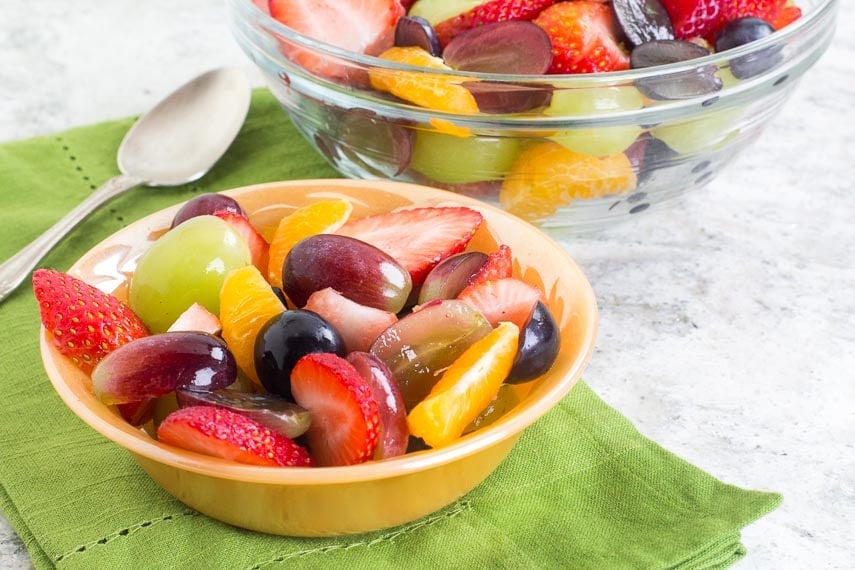
- No FODMAP Chicken Paillard
- No FODMAP Malt Vinegar Salad Dressing
- No FODMAP Sautéed Shrimp
- No FODMAP Baked Potato
- No FODMAP Steak
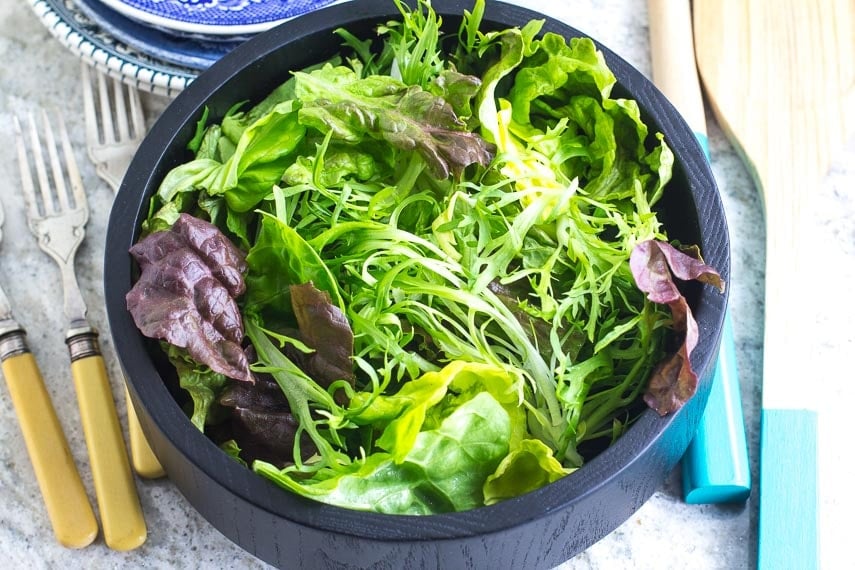
How Much No FODMAP Food Can I Eat?
We want to make it clear that we are not suggesting that you go out and gorge on anything, but in the case of, let’s say navel oranges, as there have been no FODMAPs detected in the serving sizes lab-tested, you might be able to eat more of this fruit than others that have been shown to contain FODMAP content during lab testing.
The Monash University Low FODMAP Diet App™ states that a serving size is 1 medium navel orange, weighing in at 130 g, so this is a good amount to try for yourself to see how YOUR tolerance is, which is really what counts.
YOUR tolerance…is really what counts.
You might be wondering why Monash University says a serving size of navel oranges is 130 g if indeed they contain no FODMAPs? That is because Monash also overlays “Australian healthy eating guidelines” in their recommendations for portions.
You might also enjoy reading our article, What Is A Low FODMAP Serving Size?
Use The Monash University Low FODMAP Diet App™ & FODMAP Friendly App
We find that every time we look at these apps, we learn something new. We highly recommend that you spend some time diving deep into the apps. You might learn something new and knowledge is power.
At FODMAP Everyday® we want all of you to thrive and part of that is knowing what you can and cannot eat so that you never feel deprived.
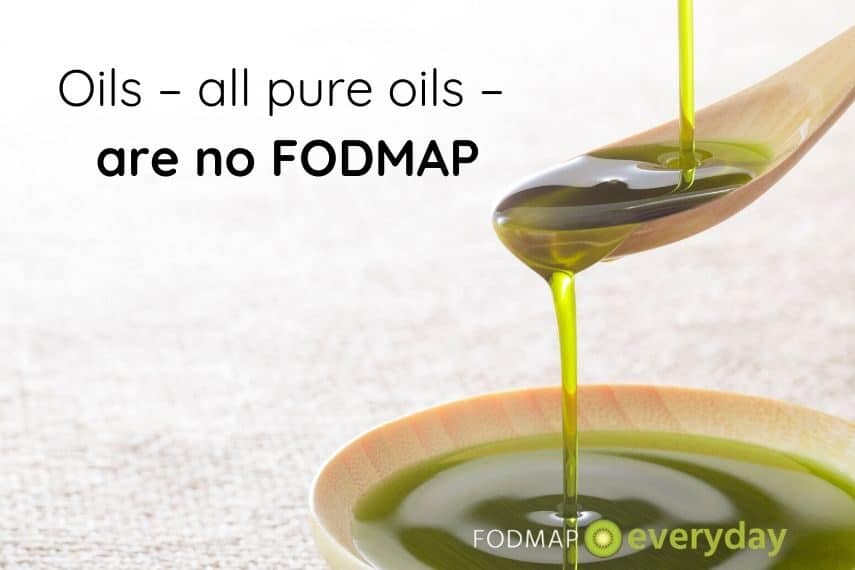
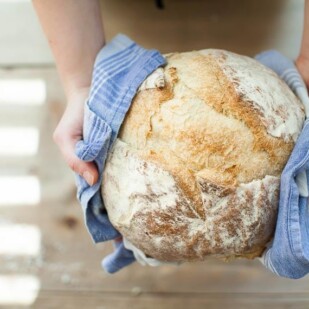

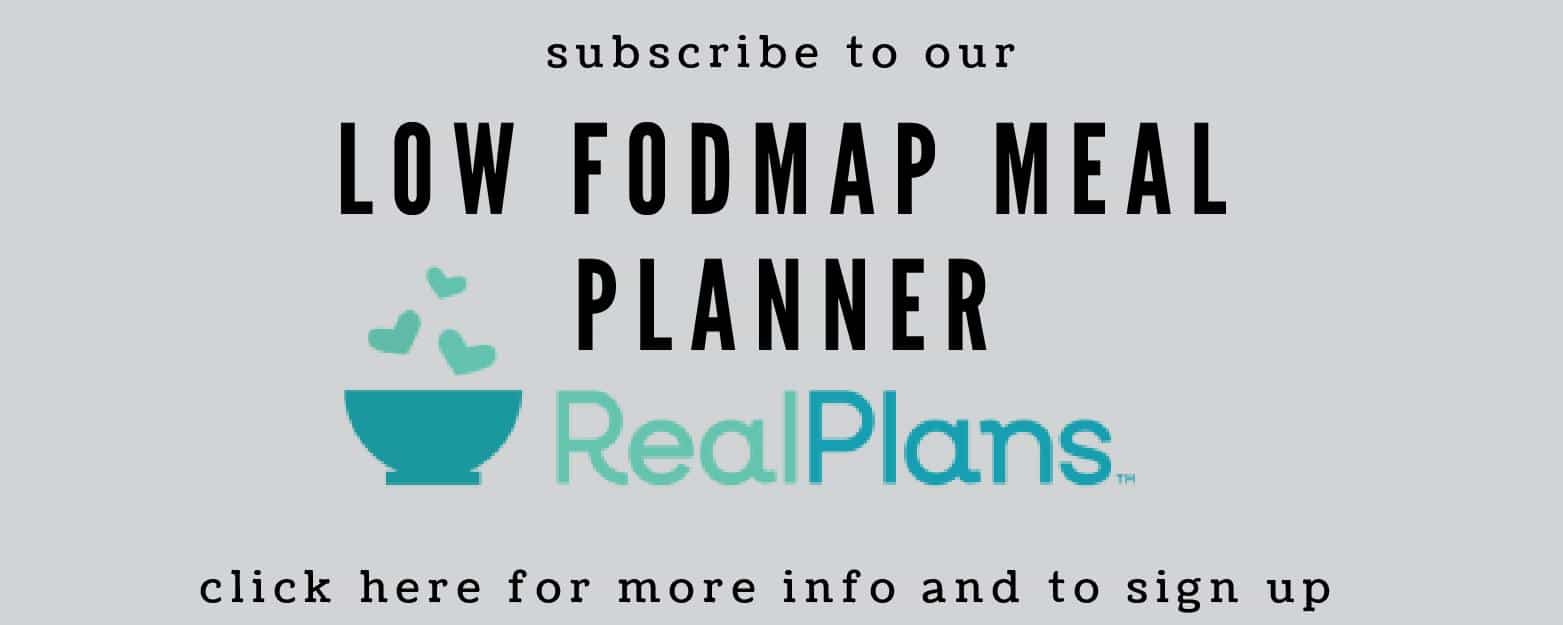




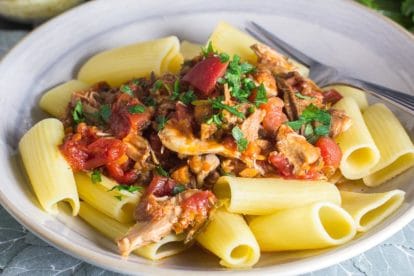
I haven’t time to cook all these good foods. Recipes galore in fodmap diet cookbooks. And I don’t mean desserts. There are so many different, incl organic, vegan, paleo, food delivery services, but none have a fodmap diet. I mean delicious , wholesome, organic , no additives. This is sorely missing. I can’t afford to hire a private cook. Suggestions?
Nancy
Hi Nancy, depending on where you live there are services. In the NY Tri-State area there is a company called Epicured. They might expand their services in the future. ShepherdWorks in Australia has a food delivery program and of course there are companies that make low FODMAP foods that have been lab tested to be appropriate for the diet such as FODY Foods, FODMAPPED, Case de Sante and others. Certainly more and more food products and hopefully prepared meal options will crop up. I understand that not all of these fit your desire for organic and additive-free. The low FODMAP world is still young and I do believe that companies will fill this need eventually.
I eat a lot of fresh stir fries and Thai foods. They take a maximum of 15 minutes to make. They are low FODMAP and delicious. I have spent the last 6 weeks doing the elimination and I feel so much better. I even lost a few pounds.
I chop veg and freeze it so when I have zero strength to cook, I just open the freezer and throw all my pre-prepared veg into a soup/stir fry or rice dish. Job done in 5 minutes. I live in the UK and Hello Fresh do a low FODMAP selection too x
I am so happy that you are experiencing relief! The diet can be a godsend. Love your plan-ahead tips, too. This will help others.
Along with stir-frying, I make a lot of soups. It’s incredibly easy to get a huge range of nutrition in soups just by adding tiny amounts of potential-trigger foods. To the meat base I add canned beans (seeds, usually; sometimes green) and things I don’t normally eat like rice, along with leafy greens, canned Roma tomatoes, lots of chopped carrots, and portion-tolerable cabbages (Napa, red, etc.). I play with seasonings — lots of ginger, turmeric, cumin, herbs, especially chives, depending on the soup flavor. A large pot of soup will easily last me five days, an on the other days I can eat plain meat with a couple of side vegetables or a meat-based salad. Or I can grab frozen and fresh foods for a quick stir-fry.
I’m also a low-carb diabetic, and much better off with truly organic foods where possible, so it’s been a challenge adding low-FODMAP to the mix, but it’s working! I have my life mostly back now, which is a looong way back from where I was in January of this year, 2022.
This list has been very helpful because I’m very sensitive to FODMAPs. Many “low FODMAP” foods give me problems so it’s best I stick to no FODMAP foods.
Can you double check to see if cilantro, black pepper, basil, and peppermint have any FODMAP? Thanks.
Hi JC, do you have the Monash app? You can easily look up herbs as many have been lab tested. Of the ones you mentioned the low FODMAP serving sizes range from 2 g to 160 g! So you really have to familiarize yourself with the app and each entry. Are you working with a RD? The diet is not a No FODMAP diet; it is a lower FODMAP diet and being too restrictive for too long is detrimental for your long-term gut health. In fact, the goal of the diet is to learn how to eat as broadly as possible without triggering symptoms. This is best determined through a structured Elimination and Challenge Phase, which is best worked through in conjunction with a RD.. Please consider an approach that will help you be as healthy and pain-free as possible.
Kia ora, thanks so much for this site. Starting out on a low FODMAP diet can be a bit overwhelming, and this site has answered a lot of questions for me. With regard to the grapes, I’ve just downloaded the FODMAP Friendly app and they have grapes as a pass, but containing fructans, and a little sorbitol and GOS. Thoughts? I’m very new to this and I’m not sure whether the testing controls for this, but do FODMAPs vary with things like storage, growing season, soil etc?
You have noticed that there are, on occasion, differences reported on the FODMAP Friendly (FF) app and the Monash app. A little background: Monash uses an in-house lab (and now one in the US as well). FF uses an independent lab. Both lab processes are considered reputable. When it comes to ANY lab, there can be differences in results. It is just like when you get blood work done. Any follow-up bloodwork for comparison sake should be handled by the same lab. Especially with produce (fruits & vegetables) variances will occur. No matter what. You could take 2 apples off the same branch at the exact moment, store and handle them the same way, send them to two labs and get different results. You could take those 2 apples, store, handle and transport them Differently, and get different results. You could take 2 apples off of the same tree, but on different days and get different results from the SAME lab. And you certainly can take two apples from two completely different trees, from different times of year, growing in different conditions, and get different results, regardless of the lab. Now, we know that the labs do not just take one sample. They take several and look for a mean, but you can see from my examples that variances can and will occur.
What the lab tests give us is a baseline. At one point in time Monash got results X with blueberries and FF got results Y. Neither is wrong and neither is more “correct” than the other. You could use either as your baseline to begin your self-assessment.
Because, and this is the real heart of the matter, you are not a lab. You might not even be able to eat the amount they suggest. Or you might end up being able to eat double. And maybe you fine tune it even further and come to realize through your Challenge Phase that you can eat double, but maybe not 2 days in a row. What YOUR personal tolerances are is what is important.
This is why a structured Elimination and Challenge phase are so important – so that you can keep track and progress.
Here are a few of articles that you might find helpful.
One on serving sizes, and one on foods that have not been tested.
Your site is so helpfull and inspiring. Thank you very much!
As in germany the Kabocha pumpkin is hard to find I would like to know, if the Hokkaido is also a no FODMAP Food?
Thanks for your help!
Hi Janin, thank you for writing. The Hokkaido squash has not been lab tested so no one knows its FODMAP content. Since we know that Kabocha and Butternut are so different, we would not suggest extrapolating. You can try as an untested food.
Monash Univ has updated their research, guidelines, and their overall philosophy to indicate that both strawberries & grapes now have recommended safe limits and also that due to the constraints of testing, they don’t want to categorize any carbohydrate-containing foods as “no-FODMAP” any more
We are in the midst of discussions with Monash about the updated research. For now we stand by what is in this article due to the conversations we have had so far. We will be publishing an article about how Monash tests food soon. One very important thing to understand is that so far they have not been able to say whether they were comparing like products. There are hundreds of varieties of grapes for instance, which all have different sugar contents. If the initial grapes that they tested were not the same type as the ones they tested recently, then the current information is not as dramatic as one might think. Also, as they state in their article, produce is greatly affected by where it is grown, how it is handled post harvest, when it is harvested etc. The fact is that they have lead tested grapes at one point and found that they contained no FODMAPs which means that this is a possibility. Just as it is a possibility that the grapes that you buy at the store are very different from the ones that they lab tested .
I was confused by grapes too, my family has diabetes on both sides of the family tree. Specialists, Nurses , and Registered Dieticians have told multiple family members not to eat grapes at all as they are high in sugar content. So as much as I love them it is rare for me to eat them. I started eliminating sugars in 2009 to lower my risk. By 2018 I finally reduced that risk. I guess what I am wondering is why or how grapes could even possibly come up in a low FODMAP range at all,don’t they contain fructans?
I just started the FODMAP diet after going through a series of elimination diets for 1 year. I do not have any diagnosed G.I conditions ,but I do have Complex Regional Pain Syndrome(CRPS). In order to reduce inflammation and control the CRPS I am eliminating many foods and trying these elimination diets to discover which ones those may be. I went back to eating a Mediterranean /Anti Inflammatory Diet that I grew up on,but I started to feel worse when eating that way. So much so I had to stop completely. This is beyond understanding of my doctors and specialists and myself. It was like a switch was flipped on after being diagnosed with CRPS,and everything I could eat prior to the diagnosis I couldn’t eat anymore, like artichokes, raw vegetables, cooked chickpeas, red and orange peppers etc. Is there any information about CRPS and needing to eat Low FODMAP?
I really love everything about this sight , it is so clear and well organized and user friendly! I have not yet signed up for Monash App or FODMAP Friendly because I use a flip phone . I do not have Apps for that. My dietician recommended them though. I just shared your website with her too. I know she will be excited about it too as she is also on the Low FodMap diets now Thank you for all you provide here!
Linda
Hi Linda, thank you for writing. We understand your frustration. Certainly getting answers is key to formulating an approach. Grapes have been lab tested to show no FODMAPs and also to show FODMAPs. It would depend on the batch of grapes you buy and there is no way to tell by looking at the grapes. More info here. As far as I know, FODMAPs have not been studied in relation to Complex Regional Pain Syndrome.
Why egg WHITES only and not eggs (among the green-lighted foods)?
That section of the article was addressing pure proteins only. Eggs are Low FODMAP. Egg whites are pure protein.